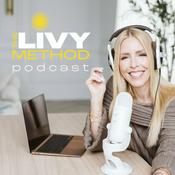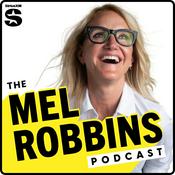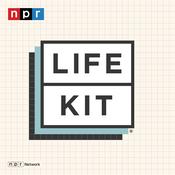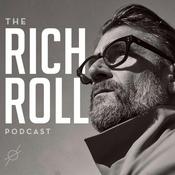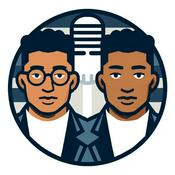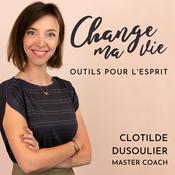57 episodes
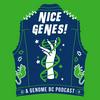
TB Trails and Tails
2025-12-16 | 35 mins.
Why Tuberculosis is still the most deadly infectious disease.Attention, DNA detectives! We’ve got a rat on the loose – but don’t worry, not the snitching, double-agent kind. We’re talking about the whiskered, hyper-skilled, tiny agents who aren't snitching - they're sniffing out one of the world’s deadliest diseases: tuberculosis (TB).Tuberculosis might sound old-timey, but it’s still the globe’s top infectious killer– growing tougher, more drug-resistant, and hitting hardest where access to care falls short. So for our Season 5 finale, host Dr. Kaylee Byers digs into TB’s fascinating backstory, and teams up with microbiologist Dr. Jennifer Guthrie to figure out why this ancient disease still has such a tight grip, and how genomics is helping track its every move. Along the way, Dr. Zolelwa Sifumba shares her story as a multidrug-resistant TB survivor, and how her treatment journey fuels her advocacy today.Buckle up: this investigation has it all : science, politics, global inequities… and a squad of extraordinary rats.Special thanks to APOPO for sending us field recordings and interviews from their HeroRAT training program.Highlights(3:42) The history of TB(8:19) Why TB sits at the top of the global disease podium(15:30) Meet Zolelwa - a multi-drug-resistant TB survivor(30:48) The power of education–Show Notes/Resources:1. Giant Rats Trained to Sniff Out Tuberculosis in Africa- National Geographic2. The Making of a HeroRAT: From Tiny Pup to Life-saving Hero- APOPO3. Tuberculosis: an ancient disease that remains a medical, social, economical and ethical issue- Journal of Preventive Medicine and Hygiene4. History of World TB Day- CDC5. The history of tuberculosis- Respiratory Medicine6. Chapter 12: An introductory guide to tuberculosis care to improve cultural competence for health care workers and public health professionals serving Indigenous Peoples of Canada- Canadian Journal of Respiratory, Critical Care, and Sleep Medicine7. Everything is Tuberculosis- John Green

Leave Us a Review
2025-12-09 | 1 mins.
Got a sec?Kaylee’s popping into your feed with a teensy, weensy favour to ask: if you’re a fan of the podcast, would you do us the honour of leaving Nice Genes! a review?Not only does it help the show, but it could also score you some very fun, one-of-a-kind prizes (details below).How to leave a review:Apple Podcasts: Scroll to the bottom of our show page, tap those five shiny stars, and tell us what you think.Spotify: Tap the star rating at the top of our show page and leave a comment on your favourite episode this season.Contest details:If you leave the pod a review by December 31st and DM a screenshot to @GenomeBC on Instagram, you could win a swag bag, or the chance to maybe even be featured on the show next season.Your feedback helps our beloved podcast reach new ears, supports the science stories you care about, and lets us know exactly what’s resonating most with you.So… what are you waiting for? Show the pod a little love and earn yourself a shot at some exclusive Nice Genes! goodies!

Menopause Mysteries
2025-12-02 | 30 mins.
Turning up the heat on a life stage science is still catching up to.Ok, most of us may have gotten “the period talk.” But the “menopause talk?” Not so much. For something that half the world will experience, menopause and perimenopause are still wildly misunderstood. Luckily, the DNA detectives are finally reopening a mystery that’s been overlooked for too long.In this episode, Dr. Kaylee Byers unpacks the science behind menopause. She calls on educator Shirley Weir to understand what menopause and perimenopause actually are– and why so many people feel dismissed when they try to get answers. Plus, reproductive genomics researcher Dr. Aspasia Destouni reveals what our genes (and a few unlikely informants– from orcas to naked mole rats) can teach us about the rebellious internal clock that drives ovarian aging.Special thanks to Andrea Rathborne- creator, host and producer of the Half Betty podcast.A note on language: This episode often uses the terms “women” and “female” interchangeably, but we want to acknowledge that menopause is not experienced exclusively by women. People of various gender identities can go through perimenopause and menopause, and it's important to be inclusive in how we talk about this life stage.Resources: Menopause and perimenopause can feel isolating, and support isn’t always easy to find. Check out resources below for guidance and trusted support networks.- Resources to help you on your menopause health journey- Menopause Foundation of Canada- Menopause & Midlife Health- BC Women’s Hospital + Health Centre- Older Adults - Trans Care BC- Balancing Your Health and Wellness During Menopause- First Nations Health Authority–Highlights(5:05) What are menopause and peri-menopause(14:09) Why menopause ages on a different timeline than the rest of the body(20:24) What genomics (and naked mole rats!) reveal about ovarian aging(24:29) Which animals experience menopause and the evolutionary reasons why–Show Notes/Resources:1. Menopause and Perimenopause- Health Link BC2. ‘Unprepared and Disoriented.’ New Findings on Menopause Impacts- The Tyee3. IN HER WORDS Women’s Experience with the Healthcare System in British Columbia- BC Women’s Health Foundation, Pacific Blue Cross4. Health and Economics Research on Midlife Women in British Columbia- Women’s Health Research Institute at BC Women’s5. Menopause and Work in Canada- Menopause Foundation of Canada6. Postreproductive killer whale grandmothers improve the survival of their grandoffspring- PNAS7. Demographic and hormonal evidence for menopause in wild chimpanzees- Science8. Naked mole rats defy the biological law of aging- Science

Gut Check
2025-11-18 | 31 mins.
What genomics can tell us about food safety, the microbiome, and the mind.You’ve heard the saying, “you are what you eat”... Well, our gut microbes take that very literally. If you’ve ever gone on vacation, eaten something tasty, and next thing you find yourself bonding with a bathroom floor, you’re not alone. Food poisoning might occasionally make for a good story later, but it’s a serious issue that lands millions of people in hospitals every year– and tracing the culprit isn’t always as simple as pointing at last night’s tacos.In this episode, Dr. Kaylee Byers chats with microbiologist Dr. Lawrence Goodridge, who explains how genomics helps track foodborne outbreaks – from the harmful bacteria in our food to the microbes living inside us. Then, Dr. Mary Sco. dives into the science of the gut-brain connection, revealing how your gut and brain are constantly in conversation.So grab a snack, and get ready to stomach the science.Highlights(4:00) The bacteria behind food poisoning(10:13) How genomics helps track foodborne outbreaks(16:35) The microbiome in all its glory, and the gut-brain connection(23:59) Some poo-ticular scientific treatments–Resources1. Yearly food-borne illness estimates for Canada- Government of Canada2. Salmonella Syst-OMICS – Salmonella Syst-OMICS Consortium3. Hack Your Health- The Secrets of Your Gut Health- Netflix4. Probiotics: 100 years (1907-2007) after Elie Metchnikoff's Observation- Research Gate5. Revisiting Metchnikoff: Age-related alterations in microbiota-gut-brain axis in the mouse- Brain, Behavior, and Immunity6. Intragastric infection of germfree and conventional mice with Salmonella typhimurium- NIH7. A randomised controlled trial of dietary improvement for adults with major depression (the ‘SMILES’ trial)- BMC Medicine8. Pick fecal microbiota transplantation to enhance therapy for major depressive disorder- Progress in Neuro-Psychopharmacology and Biological Psychiatry

Bite Club
2025-11-04 | 32 mins.
How vector-borne diseases spread– and the critters that carry themMalaria, Lyme disease, dengue, Zika… what do they all have in common? They’re what we call vector-borne diseases– spread to us by tiny, bite-happy arthropods. These little troublemakers are responsible for 17% of all infectious diseases worldwide, and with climate change and urbanization on the rise, they’re becoming an even bigger threat.In this episode, Dr. Kaylee Byers sits down with insect investigator Dr. Gonzalo Vazquez-Prokopec to untangle the intricate web of vector-borne disease dynamics, and explain what makes these insects such masterful disease spreaders. Then, Dr. Pooja Swali shares how ancient DNA from thousands of years ago revealed a pathogen’s curious evolutionary switch from one creepy crawly to another.From mosquitoes to ticks to the not-so-affectionate kissing bug, every insect in this lineup is guilty of something– and genomics is helping us figure out what.Highlights(5:51) Vector disease dynamics: The pathogen, the vector, and the host– a love triangle.(13:10) A neglected disease you may have never heard of.(17:20) Ancient DNA uncovers the tale of an opportunistic pathogen and a surprising partner in crime.(26:20) What changes to our environments does to our disease landscape–Resources1. Vector-borne diseases- The World Health Organization2. Ancient DNA used to map evolution of fever-causing bacteria- Science Daily3. Mapping the distribution of Amblyomma americanum in Georgia, USA- Parasites & Vectors4. Focal persistence and phylodynamics of Heartland virus in Georgia- Virus Evolution
More Education podcasts
Trending Education podcasts
About Nice Genes!
Listen to Nice Genes!, Coffee Break French and many other podcasts from around the world with the radio.net app

Get the free radio.net app
- Stations and podcasts to bookmark
- Stream via Wi-Fi or Bluetooth
- Supports Carplay & Android Auto
- Many other app features
Get the free radio.net app
- Stations and podcasts to bookmark
- Stream via Wi-Fi or Bluetooth
- Supports Carplay & Android Auto
- Many other app features


Nice Genes!
download the app,
start listening.


